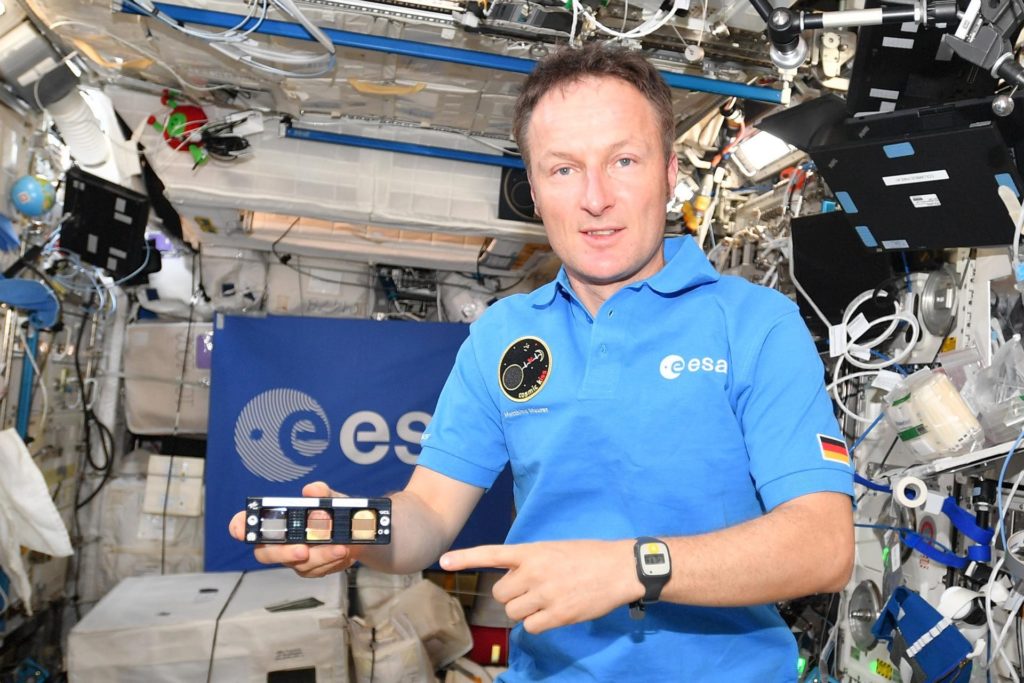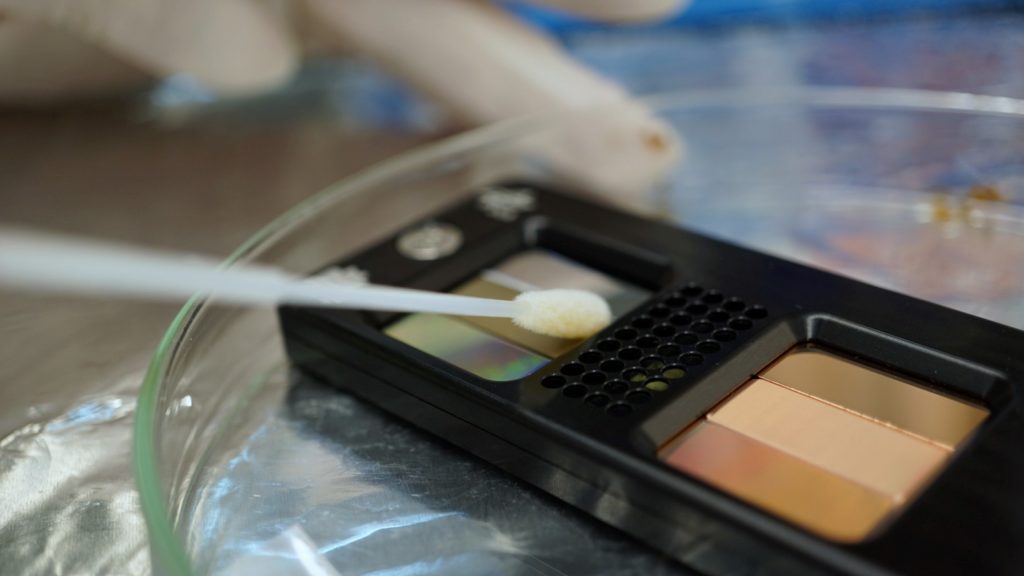Testing antimicrobial surfaces
Microorganisms exist wherever where humans are found. And humans spread them everywhere – on the International Space Station ISS as well. Long-term stays of astronauts on a space station lead to the development of microflora from the microorganisms carried on board. This can impact the health of the astronauts – especially if the composition of the microflora changes under the conditions of space flight. In addition, it has been shown that the biofilms that develop can even lead to equipment damage. For the Touching Surfaces experiment, German ESA astronaut Matthias Maurer examined new types of surfaces and tested them for their antimicrobial efficiency in space. For this purpose, he touched special sample carriers called touch arrays once a week and transferred the microorganisms from his hands to various surfaces (copper, brass and steel). This tested which microorganisms adhere to which surfaces. The experiment was also carried out on Earth in a university clinic and with schoolchildren, to obtain comparative scientific data.
Such ‘biocidal’ surfaces could provide crucial support for future hygiene measures in space and on Earth. These new surfaces can be used in all areas where antibacterial hygiene is important, for example, in hospitals, where they can help kill antibiotic-resistant bacteria such as Methicillin-Resistant Staphylococcus Aureus (MRSA) or Vancomycin-Resistant Enterococci (VRE) and ensure that pathogens cannot continue to spread via contact surfaces.
Touching Surfaces is being carried out under the scientific leadership of the DLR Institute of Aerospace Medicine and in cooperation with the Saarland University, Bonn Rhein-Sieg University of Applied Sciences and University College London.
German Aerospace Center (DLR)
Prof. Dr. Ralf Möller · Email Ralf.Moeller@dlr.de

